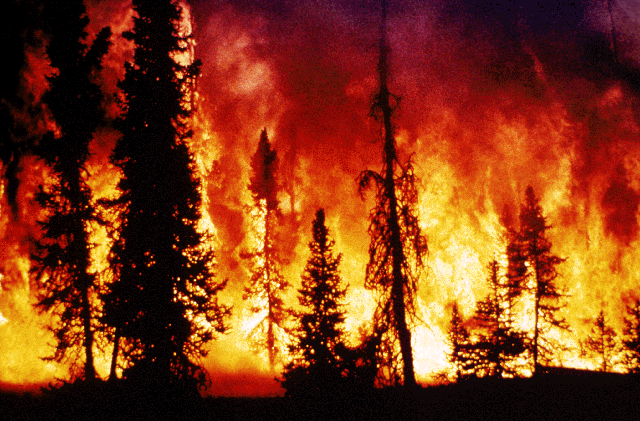My slogan click to edit me

FIRE IN THE BOREAL FOREST:
Built To Burn:
Fire is needed in the Boreal forest in order to stimulate the re-growth of some plants. Recruitment of tree species after a fire is related to species-specific regeneration strategies and soil substrate conditions, depending on burn severity. Species can be adapted to fire, like Jack Pine (Pinus banksiana) and Black spruce (Picea mariana) . Black spruce (Picea mariana), uses the strategy of producing resin cones that need fire in order to open and release its seeds, Pinus banksiana have a waxy coating. Picea mariana also create a fire ladder by creating a series of low lying branches in order to bring the fire to the crown of the trees where the cones are located.
regrowth after a fire:
Succession in a Boreal forest after a fire depends on
a number of factors. Some of these factors include
climate, pre-burn vegetation type and age, time of burn,
fire severity, topography, and the presence or absence of permafrost. All of these factors can easily alter the composition of the regenerating forest. Fires create more biodiversity by creating areas of early, mid-, and late successions. There is three types of fires that can occur in the forest being Crown, ground and surface. Early succession and shade intolerant species will thrive at first then once late succession and shade tolerant species are given the opportunity to thrive, they will take over and dominate the land causing it to look like the area pre-burn.



Click this link for information on re-growth after a disturbance! http://cfs.nrcan.gc.ca/videos/10
This is a jack pine cone (Pinus banksiana) that is opening after a fire
Not one for reading?! Check out this link for the ins and outs on fires in the Boreal!
References:
-Cumming, S. G. "Effective Fire Suppression in Boreal Forests." Canadian Journal of Forest Research 35.4 (2005): 772-. Print.
-Alexander, Heather D., et al. "Carbon Accumulation Patterns during Post-Fire Succession in Cajander Larch ( Larix Cajanderi ) Forests of Siberia." Ecosystems 15.7 (2012): 1065-82. Print.
What makes it a forest fire:
Remember, there is three types of fires that can occur, being Crown, ground and surface. When a fire occurs it changes the constitution of plant communities and soil properties which in return makes for a great area for new generation to take place. But it's not that simple, you also have to look at what type of fire it is! Consider the intensity and severity of the burn, different levels will produce different results. When the landscape is severely burnt it produces new pH levels and rejuvenation the blackened soil, which cause of albedo has a higher temperature due to burn and more direct sunlight. Making it easy for species adapted to that live style to thrive in.
BOREAL @ MEMORIAL